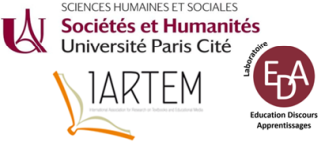Today's society is characterised by the impact of technologies in the different areas of daily life of citizens of all ages. Education is one of the areas in which digitalisation has advanced the most in recent years, and Compulsory Secondary Education pupils are one of the age groups in which the use of different technological devices has become most widespread. Uses linked to education, inside and outside educational centres, and also to leisure. A large group of researchers from six Spanish universities located in three autonomous communities have spent the last decade analysing the selection, evaluation, use and creation of digital teaching materials at three educational stages: Pre-school, Primary and Compulsory Secondary Education. The results obtained in the Infant and Primary stages show the specificity of the introduction of digital technologies in relation to the psycho-evolutionary characteristics of the pupils and the pedagogical model underlying the practices that derive from their introduction in the classroom. The findings led to the decision to continue research at the next educational stage, for which the project Digital Teaching Materials (hereinafter DTM) in Compulsory Secondary Education. Análisis y propuestas para su uso escolar y sociofamiliar (Secundari@ Digit@l) (PID2022-13736608-100). This project pursues four fundamental objectives which will be materialised by carrying out various studies. Objective I: to analyse the pedagogical and technological characteristics of a sample of digital educational content repositories and platforms currently existing in Spain for secondary education, both commercial educational content platforms and public institutional repositories; Objective II: to identify the representations and opinions on the transition from textbooks to educational MDD by the different sectors involved: teachers, students, families and publishers; Objective III: To explore the educational use of the MDD in the classroom and its impact on the teaching and learning of all students, as well as its usefulness and suitability to cater for diversity, focusing the study on a sample of schools in the Canary Islands, Galicia and Valencia; and Objective IV: To transfer the knowledge and findings to society, through training activities aimed at different educational agents, as well as through the development and validation of a multimedia and interactive guide with recommendations for good practice on the creation and educational use of these materials. This project aims to answer questions such as: What educational materials are offered in the Spanish context for Compulsory Secondary Education, what pedagogical model underlies them, what differences exist between commercial and institutional platforms, what representations do the different educational and social agents involved have, how are they used and what impact do they have on teaching and learning in the classroom, and what recommendations can be made to the different agents and sectors involved to produce and use the school resources and content distributed online with educational quality? In order to answer these questions, a mixed methodological design is used, combining quantitative and qualitative methodology. The data collection instruments are designed ad hoc and validated by experts. At present, studies I and II, corresponding to the first two objectives of the research, are being carried out and, therefore, this paper will present the preliminary results regarding the analysis of materials and the perceptions of the different educational agents, as well as those of the students of Compulsory Secondary Education.
- Poster

 PDF version
PDF version

